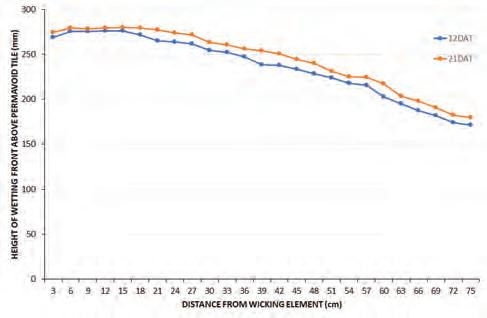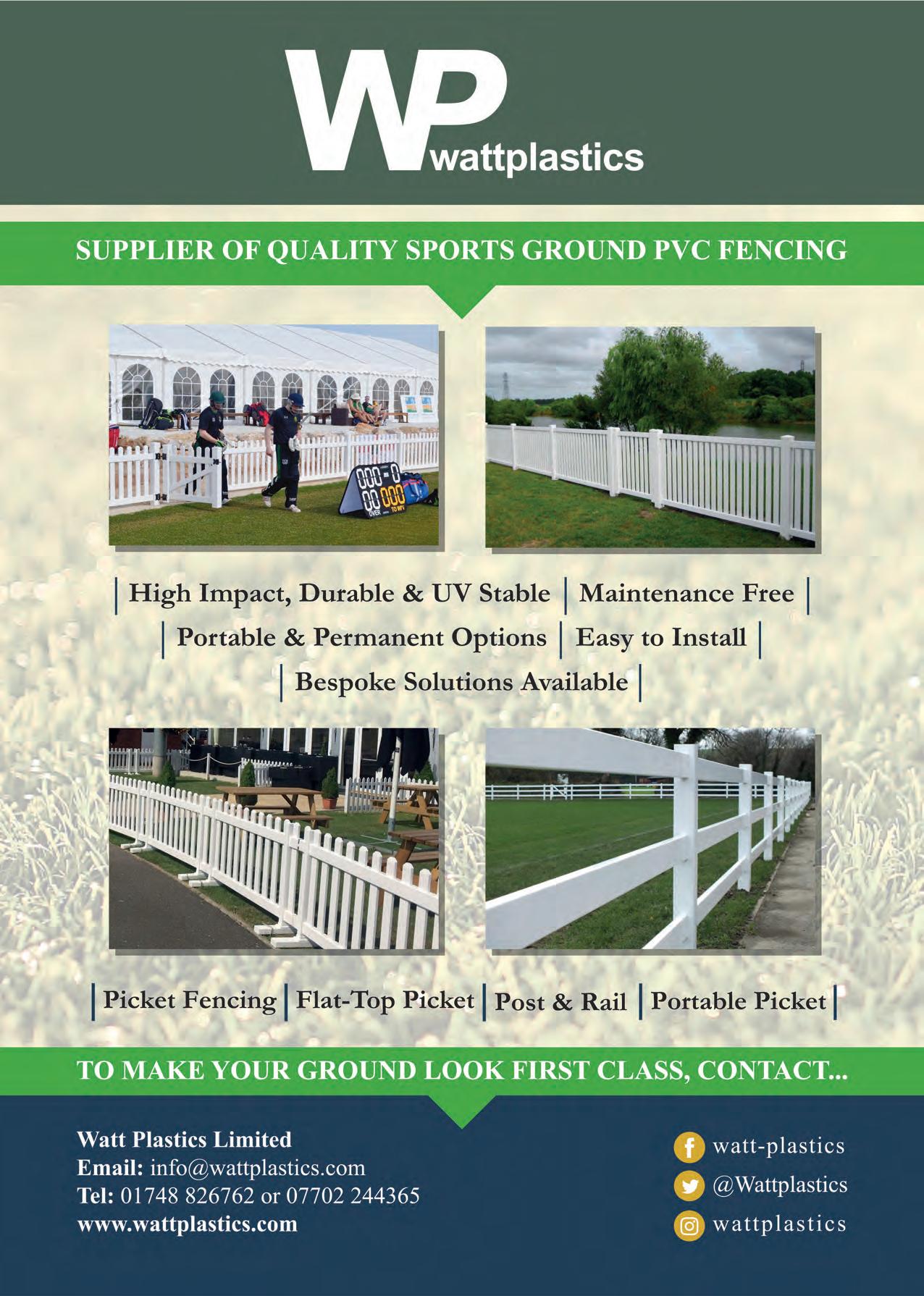
8 minute read
Technical update: Permavoid
TECHNICAL UPDATE | WATER MANAGEMENT TECHNICAL
UPDATE
Dr Christian Spring STRI research operations manager




GOING UNDERGROUND
PERMAVOID is an incredibly strong plastic tile, made from 90% recycled materials, that measures 0.71m x 0.35m and is composed of 95% air space. The system was originally developed for managing water as part of sustainable drainage schemes, such as under car parks. It can be ‘tanked’ by being wrapped in an impervious membrane, giving the ability to store tremendous amounts of water in a very flat profile. The water can then infiltrate into the soil over time or the outflow can be controlled to attenuate water. The system has evolved by the creation of wells in the tiles in which wicking cylinders can be inserted to create a passive irrigation system (the Blue2Green system) that can pull water out of the tanked tile, allowing it to be taken up by plants.
In the laboratory
STRI’s research encompassed a range of scientific trials: • Laboratory evaluation of the wicking system, its components and interaction with growing media • Field evaluation of the Blue2Green system in both arid and tropical climates • Field testing of Permavoid as a drainage layer and its ability to reduce rootzone depth • Permavoid’s use in temporary sports surface constructions • Integration of Permavoid in modular pitch solutions • Integration of pitch profile systems, such as Sub-Air, with a passively irrigated Permavoid raft.
In all trials, Permavoid had benefits above conventional solutions alone.
Initial testing on evaluating the science and efficacy of the wicking components aimed to assess: • How did the wicking systems work and under what conditions did they work optimally? • How effective was the passive irrigation system at pulling water into the growing medium? • What spacing would be optimal in sports turf installation with typical sand-based growing media?
The wicking components were tested by looking at the rate and extent to which dyed water was drawn up by the materials when they were sat in a reservoir of liquid (Fig 1). It became clear that when they were pre-charged with water, they tended to respond more rapidly than when dry (Fig 2).
To evaluate how the wicking system
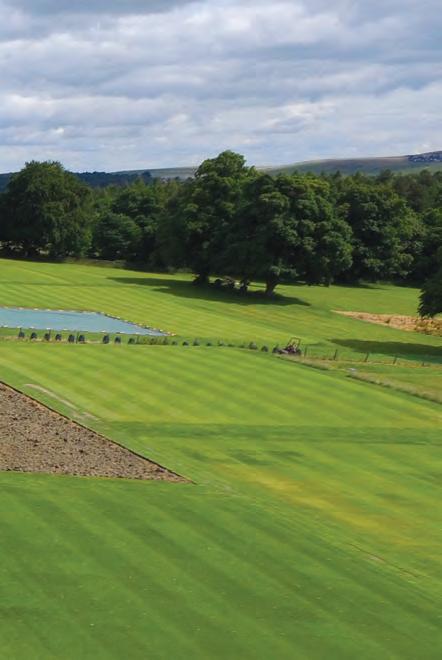
Figure 1: Testing the wicking components using dyed water
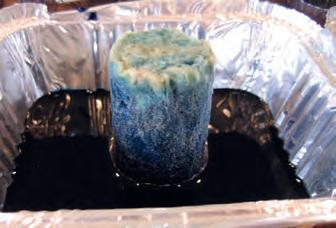

Figure 2: Performance of dry vs pre-soaked wicking components
A six-year research project by STRI into an innovative water management system based on the Permavoid geocelluar tile system has produced some startling results – both in the laboratory and in the field – for cool and warm season grass playing surfaces


worked in pulling water through a growing medium, eight clear Perspex tanks were set up; each with a Permavoid tile in the bottom, a wicking cylinder at one end of the tile and wicking geotextile membrane laid on top of the tile, as it would be when installed in the field. Half the tanks were filled with a medium-coarse sand-based rootzone; the others were filled with a medium-fine rootzone – both spanning the typical range of materials found on sand-based football pitches and golf greens. This was to assess the effect of rootzone particle size on capillary rise and how this interacted with passive irrigation.
The rootzones were initially tested dry, to see how the sub-surface irrigation system would work on new installations in drier climates, when rootzones may be more hydrophobic at the point of installation. The rootzones were wetted from below and the trial repeated to reflect situations where growing media were not hydrophobic. The tanks were topped up with dyed water and progression of the dye up the front soil profile was measured, to assess not only the peak rise of the irrigation water but also the consistency of rise with distance (to look at optimal spacings between cylinders).
The results validated the passive irrigation concept. Initially, when the rootzones were dry, the rate and total extent of wetting front rise was similar (Figs 3 and 4, below). This was not quite as soil physics would predict! It would be expected that the rise in the wetted front would be greater in the finer textured rootzone. However, once the rootzones had wetted up and became less hydrophobic, results were more consistent with soil capillary rise theory (Figs 5 and 6, overleaf). Under these conditions the level of rise was significantly greater in the medium fine rootzone. The rate of rise was also quicker once rootzones had been prewetted. This has important implications for establishing seedlings, when their root systems are shallower and less well developed.
An interesting conclusion from this would be that, as stadia are using coarser rootzones, then profile depths would need to be much shallower to attain any benefit from sub-surface irrigation or a suspended water table. This is especially relevant when considering the average depth of rooting in stadia, where rooting is often confined the upper 100mm of the profile.
Field trials
Field research (in Bingley, Yorks) was then carried out on both cool and warm season grasses, with the cool season trial focusing on: • Comparing the performance of
Permavoid with a conventional gravel raft. • Investigating if it was possible to


use a shallower profile with the Permavoid tiles and how this affected surface performance. • Assessing wear tolerance and turf performance.
A fully replicated and randomised block design trial was constructed and two groups of treatments were under investigation – depth of rootzone installation and rootzone grading. The treatments evaluated were:
Rootzone depth
1. 300mm over gravel raft 2. 50mm o ver Permavoid 3. 100mm over Permavoid
4 . 200mm over Permavoid 5. 300mm over Permavoid
Rootzone grading
A. Medium-fine B. Medium-coarse
Grass was established from seed (using a seed mix typical of professional football pitches), and nutrient and irrigation inputs were made to ensure plant health. The trial ran for two full football seasons when there were routine assessments of turf quality and colour, grass cover, soil water content, surface hardness, surface traction and water infiltration rates. Wear was applied to replicate the level of stress typical of high wear areas of a pitch.
Permavoid performed as a drainage layer. And the results from studying the different depths of rootzone were thought provoking. When installed over Permavoid, it was possible to maintain a high performance playing surface on rootzone constructions ranging from 300mm to 50mm. Throughout the trial, turf and playing performance on plots with 300mm rootzone over Permavoid were the same as a conventional
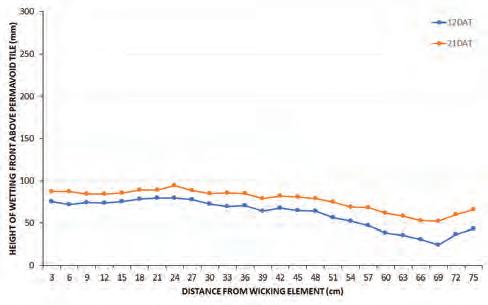
construction profile (300mm rootzone over gravel). In addition, the performance of the 200mm over Permavoid plots was similar to both 300mm profiles.
This has led to greater flexibility when designing pitch profiles with Permavoid as the drainage layer. There are systems now on the market where 200mm of the right grade rootzone are being used.
However, it was not surprising that under adverse growing conditions – in this case drought stress – shallower profiles became stressed more quickly. But they could be successfully managed by adjusting management inputs.
Down under
The results from this trial were stunning. But the results were transformational when we carried out a trial at STRI’s Australian research facility where the test plots had the Blue2Green system installed. The aim was to assess if supplying water from beneath to warm season turf could result in meaningful water savings, compared to supplying water conventionally through surface irrigation. The average water saving was 34% and the benefit under hot and dry summer conditions resulted in up to 60% water savings. This shows how much water is lost, and therefore unavailable for the plant to take up, under high evaporative conditions.
In addition to water savings, the passive sub-surface irrigation also resulted in greater consistency in soil water content, with values being maintained at optimum levels for healthy grass growth. This opens up tremendous opportunities; not only to save water but also to effectively harvest and store water from across a facility, allowing it to be re-used when needed. ■
The ‘play anywhere’ surface
STRI’S WORK on Permavoid also included research into temporary sports surface solutions all including Permavoid as the base construction. This was because of its inherent qualities of being very strong, quick to install and remove, effective at spreading load and helping to prevent damage to the surface below, as well as its ability to hold and store water. The spectrum of surfaces ranged from natural and artificial turf pitches and temporary golf tees. STRI was also involved in the development of a portable hockey pitch system (see The Groundsman September 2019).
In addition, it is not just STRI that is finding Permavoid a solution to technical challenges. It has been installed by two Premier League clubs and it is the drainage layer of choice for the StadiaPitch system – a novel modular pitch solution that allows for the rapid and flexible changeover from a natural turf pitch to an event floor in less than 12 hours. www.stadiapitch.com
Visit www.strigroup.com; and www.polypipe.com/wms for more information about Permavoid
Figure 5 (left) and 6 (right): Soil capillary rise differences
